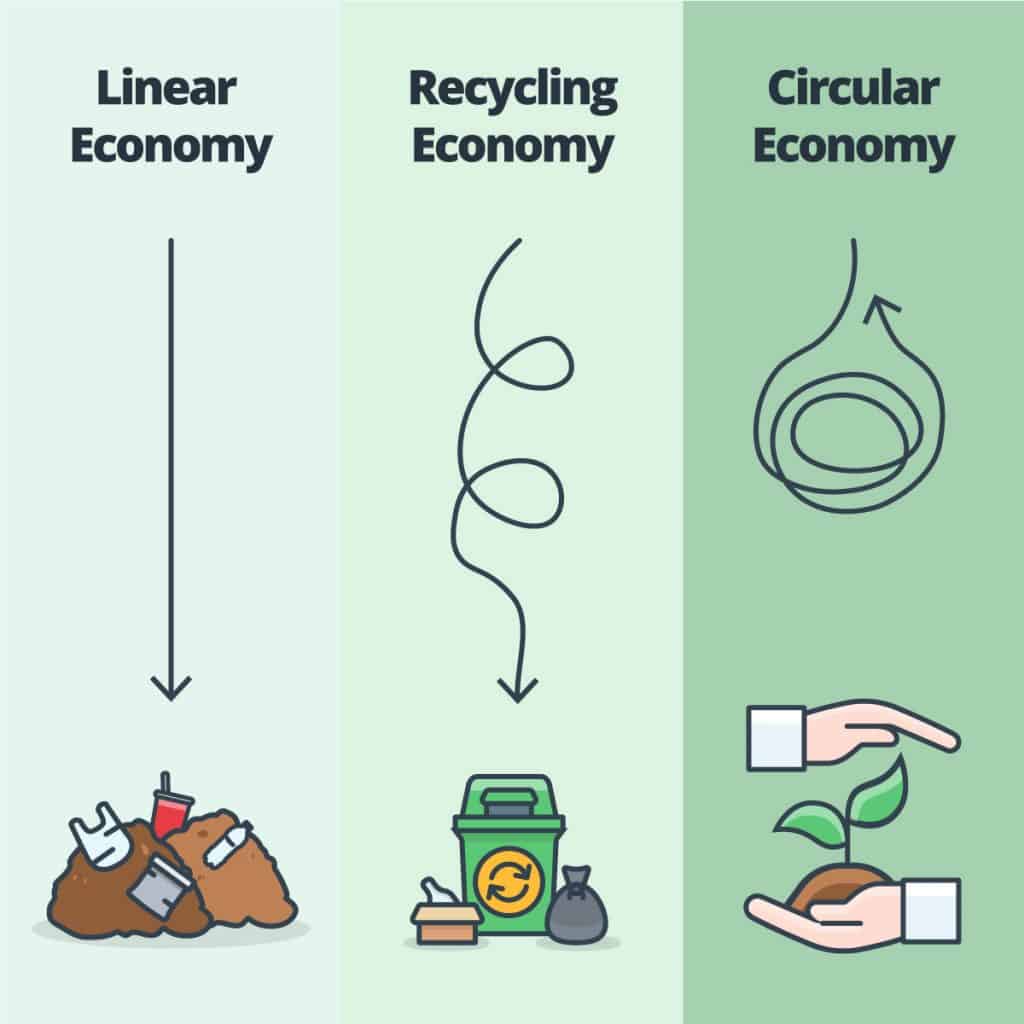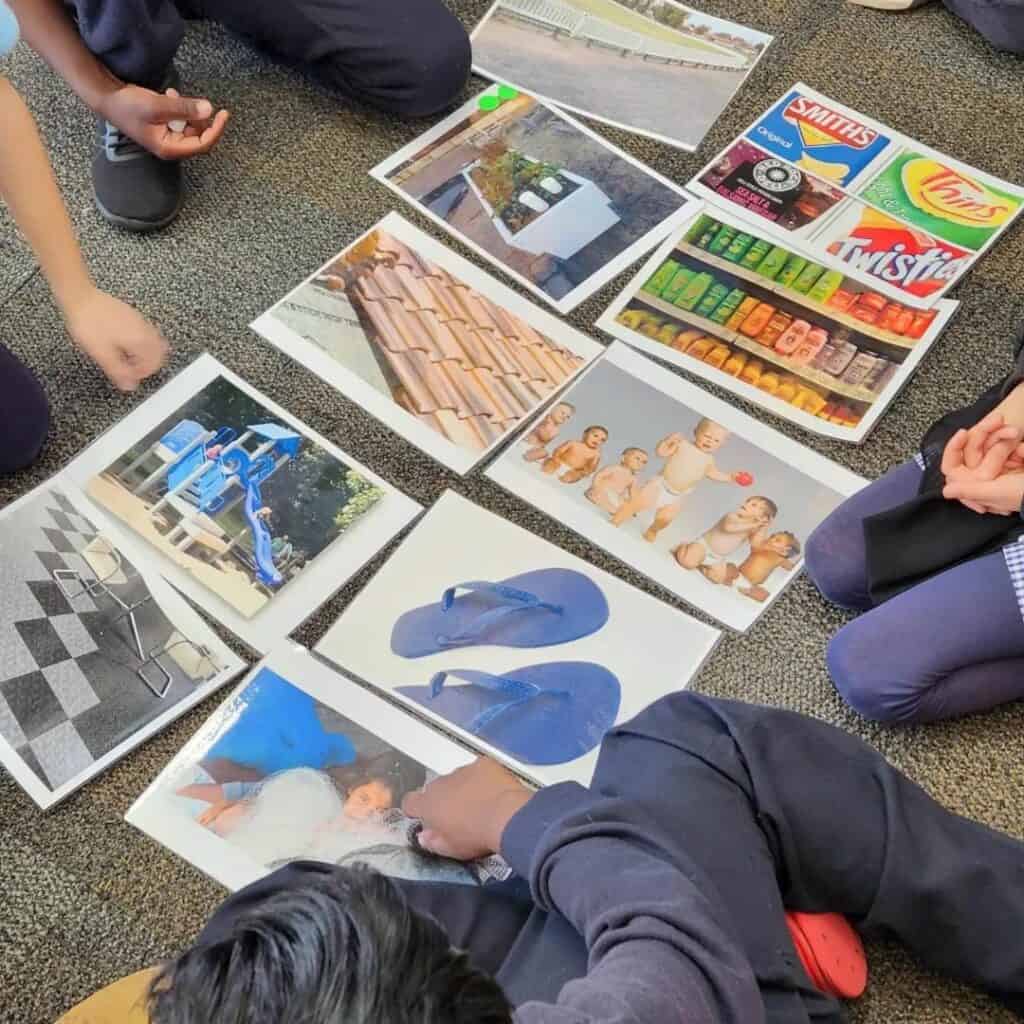5 R’s of the Circular Economy
-
Recycling and Upcycling
-
Sustainability and radical waste resource recovery
-
Design and Innovation
-
Properties of Materials
-
Worms, maggots & soil health
-
Global citizenship
Program Overview
This new innovative program for level 5 & 6 explores responsible consumerism, design and waste minimisation. It goes beyond recycling – allowing students to understand the principals of a linear verses a circular economy and introduces students to new innovation that’s transforming waste into worth. We explore what’s hot about compost and maggots, the journey of products and their outdated planned obsolescence design, what we can do about it, the new career pathways in waste innovation, and how we can make a difference in our every day lives.
Learning Outcomes
You offer a 2 hour (3 modules) program and a 4 hour option (5 modules) program. All provide students a basic understanding of a linear and a circular economy, be able to help make better purchasing decisions (individually and with family), distinguish between everyday items that can be recycled or upcycled, those that must go to landfill, and how specialised waste such as e-waste, clothing, coffee waste, oral care and others are being turned into new innovative products. For example chewing gum is being transformed into shoes and buckets and coffee waste is being used to grow mushrooms and turned into textiles.
Students are introduced to resource limitations and Overshoot Day, the Blue and Green Economies and the 6th wave of innovation and how it’s driving radical resource productivity, job creation and sustainability. We will discuss how science and business are making smarter resource decisions and how we can all play our part. Activities allows students to work in groups to conduct independent learning. It also requires students to utilise their verbal communication skills to present their findings to the class.
Students will become familiar with the natural resources used to make common single-use items and will discover that such resources are limited and need to be used wisely. Students will determine if a range of single-use items can be recycled or if the materials/production of the items can be changed to make a more sustainable product. They will also be able to identify the value of food waste, new options for food waste, and why burning waste i.e. waste to energy is not a smart option, especially if we are to provide resources for future generations. They will understand why soil health is important and how we can reduce stress of the human food chain by using a more natural source of protein for fish and poultry by upcycling food waste using black soldier flies.
Students will be familiar with the processes used to recycle steel, aluminium, glass, paper and plastic, and understand that our common, everyday items are derived from natural resources which are limited and need to be used wisely. They will also understand there is now a substitute to trees being the main resource to make paper -by introducing Stone Paper.
By the end of this program students will have created a list of everyday actions that could be implemented to conserve resources and will feel empowered to share these actions with others within their community.
The 5 modules you get to choose from include:
Module 1 – INTRODUCTION to 5R’s: Rethink, Refuse/Reduce, Reduce, Reuse/Repurpose, Recycle
In this module we introduce the 5 R’s as they relate to production and consumption. In many ways it’s an extension of Earth’s Treasures (F to year 2) as it’s all about the sustainable use of resources. We remind students what natural resources are used in every day products – and discuss options of what we can do with them once they are used, worn out or discarded. By the end of this module, students will have a basic understanding of a linear verses a circular economy, be able to identify that all products come from natural resources and why we need to change how we both make products and our purchasing decisions.
Module 2 – APPLICATION of 5R’s: Rethink, Refuse/Reduce, Reduce, Reuse/Repurpose, Recycle
In this module we apply the 5Rs thinking via a hands-on activity that distinguishes between everyday items that can be recycled/upcycled and that in reality, waste is only waste if we waste it – as all products can be made into something else. We just need the will to do it as the science already exists.
Module 3 – RETHINK Common Products and their Materials
By the end of this module, students will be familiar with the natural resources used to make common single-use items and will discover that such resources are limited and need to be used wisely. Students will determine if these single-use items can be recycled or if the materials/production of the items can be changed to make a more sustainable product. We will provide a brief introduction to the concept of Overshoot Day. The activities are an extension of this in that once student understand the underlying resources used in production, they may be more creative in their thinking about recycling and upcycling. We also introduce the concept of closed loop production where products are designed to taken apart and reused again and again in the manufacture process.
Module 4 RECYCLING and UPCYCLING – How the waste crisis is sparking an innovation revolution and creating new jobs and industries (MOST POPULAR)
The aim of this module is to introduce students to the Blue Economy (100 innovations inspired by nature to create 100m new jobs in 10 years), the Green Economy and the 6th wave of innovation and how together they are driving radical resource productivity, job creation and sustainability. We will discuss how science and business are making smarter resource decisions and how we can all play our part. Activities include a “waste and product matching activity” and a “brainstorming activity” (if time allows) to consider other items that could be made from waste.
Module 5 – RETHINK Innovation in Food Waste.
By the end of this module, students will be able to identify how to reduce food waste, the value of food waste, new options for food waste, and why burning waste i.e. waste to energy is not a smart option, especially if we are to provide resources for future generations. They will understand why soil health is important and how we can reduce stress of the human food chain by using a more natural source of protein for fish and poultry by upcycling food waste (maggot farming) using black soldier flies.
All programs start with an introduction and end with a Call to Action allowing students to create a list of everyday actions that could be implemented to conserve either value virgin and or waste resources, that would then be shared with others either at home, at school or in the community.
Curriculum Links
SCIENCE: Science Understanding/Chemical Science
Changes to materials can be reversible, including melting, freezing, evaporating, or irreversible, including burning and rusting (VCSSU077)
– Investigating irreversible changes, for example, rusting, burning and cooking
– Exploring how reversible changes can be used to recycle materials
SCIENCE: Science Inquiry Skills
Communicate ideas and processes using evidence to develop explanations of events and phenomena and to identify simple cause-and-effect relationships (VCSIS088)
– Using a variety of communication modes, for example, reports, explanations, arguments, debates and procedural accounts, to communicate science ideas.
CIVICS and CITIZENSHIP: Citizenship, Diversity and Identity
Examine the concept of global citizenship (VCCCC017)
– Identifying the obligations people may consider they have as global citizens, such as an awareness of human rights issues, concern for the environment and sustainability, and being active and informed about global issues.
DESIGN and TECHNOLOGIES: Technologies and Society
Investigate how people in design and technologies occupations address competing considerations, including sustainability, in the design of solutions for current and future use (VCDSTS033)
DESIGN and TECHNOLOGIES: Creating Designed Solutions
Negotiate criteria for success that include consideration of environmental and social sustainability to evaluate design ideas, processes and solutions (VCDSCD041)
– Considering the criteria for success in relation to the benefits and costs of production processes, the environmental impact, future use and application, and social values and ethics of clients
– Evaluating designed solutions from a range of technologies contexts with consideration of ethics and sustainability
ECONOMICS and BUSINESS: Resource Allocation and Making Choices
Describe the difference between needs and wants and explain why choices need to be made. (VCEBR001)
Identify types of resources (natural, human, capital) and explore the ways societies use them in order to satisfy the needs and wants of present and future generations (VCEBR003)
– Brainstorming resources that are used in their school and categorising them as natural (water, coal, oil), human (workers, business owners, designing, making, thinking) and capital (tools, machines, technologies)
– Evaluating the sustainability implications of materials, systems, components, tools and equipment, for example materials can be recycled or re-used to reduce waste; systems may benefit some, but disadvantage others
– Considering the impact designed solutions have in relation to sustainability and also on local, national, regional and global communities, including Aboriginal and Torres Strait Islander communities and countries in the Asia region
ECONOMICS and BUSINESS: Consumer and Financial Literacy
Consider the effect that the consumer and financial decisions of individuals may have on themselves, their family, the broader community and the natural, economic and business environment (VCEBC005)
– Considering if their actions have an effect on the environment, for example, does choosing to use recycling shopping bags or reusable have an effect on the natural environment?
The Victorian Curriculum F-10 content elements are © VCAA, reproduced by permission. Victorian Curriculum F-10 elements accurate at time of publication. The VCAA does not endorse or make any warranties regarding this resource. The Victorian Curriculum F-10 and related content can be accessed directly at the VCAA website.



